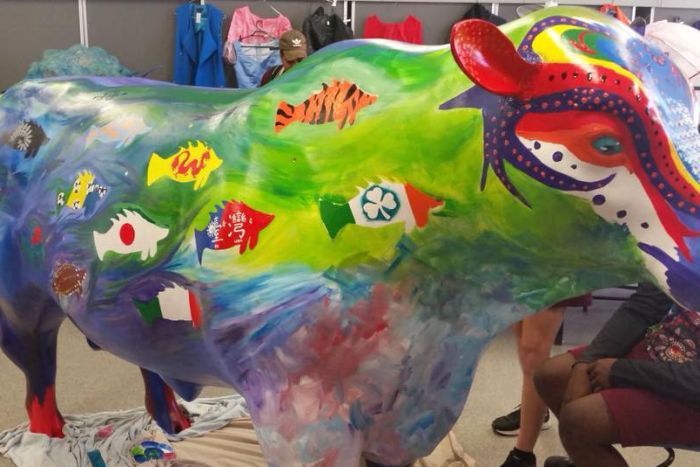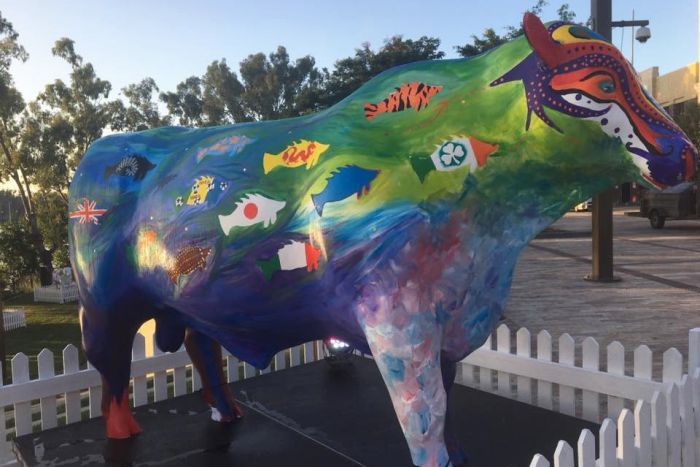A regional council in Queensland, Australia has covered up two Taiwanese flags painted by children onto a bull statue which was created to celebrate the community’s cultural diversity.
According to Australia’s national broadcaster ABC, Amber Jun Xie and Iu Ting Xie – Taiwan-born siblings and students from Rockhampton, Queensland – were asked to paint six bull statues for a project by the regional council and Beef Australia ahead of a cattle industry event.

But when it was erected, the students’ fish-shaped Taiwanese flags had been covered up by the council’s department, Advance Rockhampton, in order to “[adhere] to the one-China policy.” The students were “very sad and disappointed” over the council’s move, as well as shocked that “their culture cannot be showed in public,” their mother told ABC.
China does not recognise Taiwan as a country and has long pressured the international community over its status and the use of the Republic of China flag. Beijing maintains that the island-nation is a renegade province of China.
See also: Taiwan: US gov’t departments’ removal of flag from websites ‘unacceptable’

On Monday, ex-US Secretary of State Hillary Clinton warned of China’s attempts to exert political influence in Australia and New Zealand, where “experts are sounding the alarm about Chinese efforts to gain political power and influence policy decisions,” she said in a speech.
Earlier this year, Australian airline Qantas removed references to Taiwan as a country on its website following pressure from China, while a woman in Sydney was reportedly fired from a hotpot restaurant for saying that Taiwan was not part of China.
